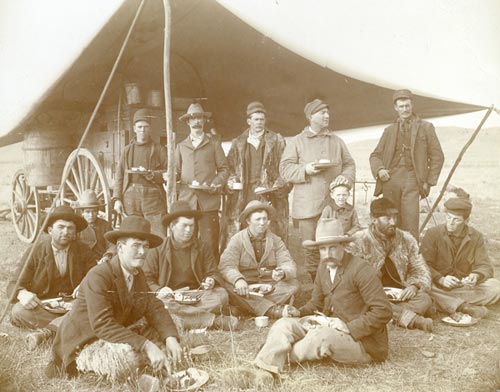The Ucross info packet warns to be prepared for mud and inclement weather. I have been agonizing over what boots to bring.
My favourite pair of boots are British. I’ve had them since 1999. They’ve been to residencies at The Banff Centre and The Vermont Studio Center, as well as to Ottawa, Toronto, Vancouver, San Francisco, New York, London, Paris, Amsterdam, Venice, Florence and Rome. I don’t want to destroy them any further. My second favourite boots are French. I’ve had them since 1997. They are entirely plastic and yet somehow not waterproof. I don’t care what happens to them, but they have a bit too much heal for traipsing down the dirt roads of Ucross in the dark. My newest boots are Spanish. They have too much heal for traipsing down the sidewalk in broad daylight – what was I thinking? And, Montréalaise that I am, I have Sorel snow boots for sub-zero winters and Italian knee-high leather boots for thigh-high skirts, but neither of those seems quite right for autumn wind-swept ranch roads either.
I can’t afford new boots and even if I could, what kind of boots suit dirt roads and the endless airports I will have to travel through to get to them? What kind of boots can be worn indoors and outdoors alike, are tall enough to keep wind away from ankles but loose enough to be not too hot on those occasional warmish fall days, and won’t show the dirt? Last week it finally dawned on me that cowboy boots were invented for ranch conditions. Duh. And I already have a pair, bought used 1994 or so. I keep forgetting about them, so they’ve lasted well. The past few years they’ve badly needed repairs. This week I had them resoled. They look better now than they did when I bought them for a song a dozen years ago at a Jeanne Mance Street yard sale from a girl who was both leaving town and turning vegan.
Is it the height of cliché to show up in Wyoming wearing cowboy boots? Is it any better if we call them western boots? Does it matter that my western boots were made in Spain? Need I remind everyone that I was born and raised on a farm? Yes, apparently. Our farm was in eastern Canada but I still wanted western boots. My back-to-the-land father balked at the cowboy boot cliché. What did they know? Let me tell you, riding a horse in sneakers really sucks. You get no purchase in the stirrup. Which is a big problem when you’re six and weigh in under 60 pounds. My best friend in the first grade was a boy named Craig. He wore cowboy boots. His father was a truck driver. Go figure. Craig hated his boots and I hated my sneakers so we traded footwear every morning. I wonder what ever happened to him. Converse One Stars?
These, the niggling concerns of a fiction writer, will not dissuade me from wearing my western boots westward. If the boots fit wear ‘em. Now there’s a proper cliché.
. . . . .
